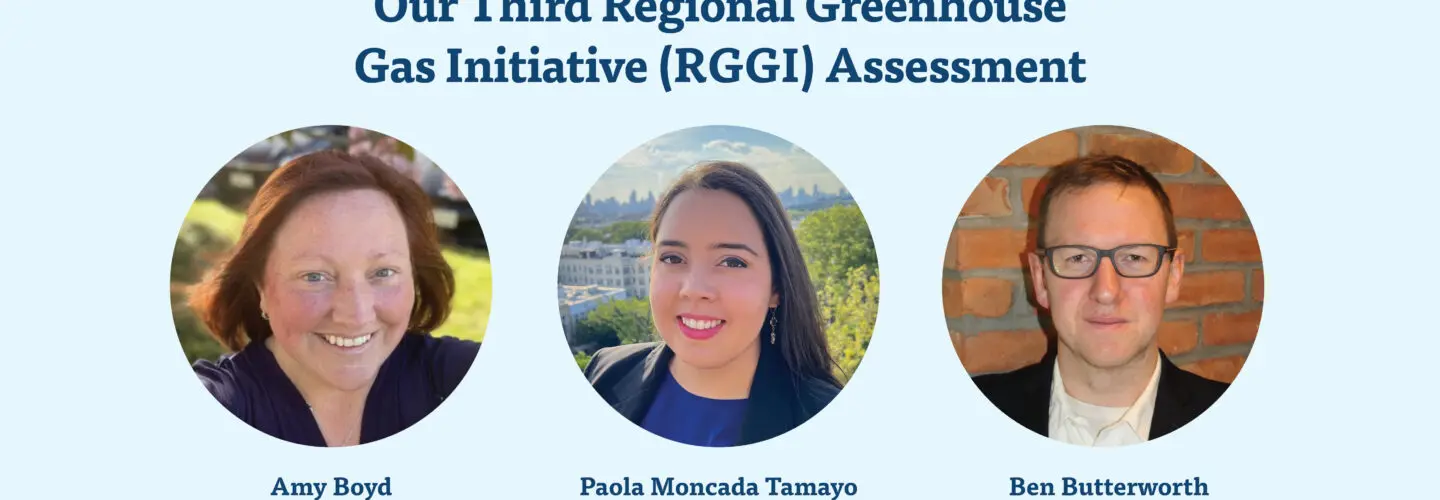RGGI Findings and Recommendations Webinar Summary
Acadia Center hosted a webinar on April 11th, where staff discussed the latest Regional Greenhouse Gas Initiative (RGGI) Report, Findings and Recommendations for the Third RGGI Program Review. You can watch the full webinar and read through the summary below.
The presentation began with our hosts explaining what the Regional Greenhouse Gas Initiative (RGGI) is. The cap-and -invest program launched in 2008 and includes 11 states across the Northeast. It aims to limit emissions by getting power plants to purchase emissions allowances through state auctions. The proceeds then go towards state-directed investments in things like clean energy and renewables. Since its inception, RGGI has generated $6.2 billion in proceeds for investment in these states. The 9 states that consistently participated have seen overwhelming success in shifting away from fossil fuels, growing the economy and lowering consumer costs simultaneously. The third program review is currently underway, which is why Acadia Center’s report is timely and can offer insights into how to improve the program.
This report analyzed the impact of RGGI on Environmental Justice communities who face disproportionate drawbacks from emissions, including health and quality of life impacts. RGGI collects little data tracking how the funds are spent and whether they’re flowing to EJ communities appropriately. Although RGGI has achieved great success in reducing NOx emissions across the region, localized air impacts in disadvantaged communities still exist. Acadia Center created a NOx Pollution Threat Score which ranks the worst offending NOx polluting plants in populated areas.
Acadia Center recommends RGGI address the following in their ongoing program review:
- Set the market cap to reflect aggressive state climate and clean energy goals
- Adjust market mechanisms to better align with decarbonization policies and the social cost of carbon
- Commit to investing 40-50% of proceeds in EJ communities, and involve EJ communities in determining in what programs to invest
- Provide publicly available information to track how funds are being used to ensure this threshold is met
- Decrease NOx emissions at the power plants that create the largest respiratory heath risks
- Increase funding and enforcement of air quality monitoring, particularly in EJ communities
- Lower the threshold capacity for RGGI regulation to 15 MW, bringing in an additional [get number from FAQs] 91% of which are near EJ comunities
The webinar concluded with a Q&A session with the audience, which you can watch in the video above. Thank you to all who participated in the webinar for your interest in RGGI and our latest report.




















Follow us